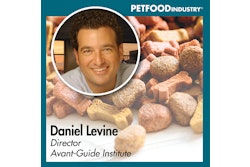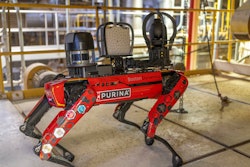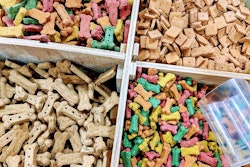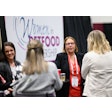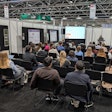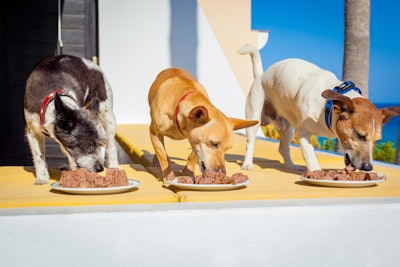
In recent years, the raw pet food industry has faced a series of challenges, with outbreaks and recalls linked to Salmonella contamination. This has led to a negative perception and concerns over the safety of raw pet foods.
Amidst these concerns, however, a promising solution emerges: the gas phase-hydroxyl radical process. Already proven effective in various applications, from decontaminating frozen berries to sanitizing hatchery eggs, this technology offers a potential game-changer for raw pet food safety. By providing a reliable risk management tool, it not only safeguards existing markets but also holds the potential to expand them.
Dr. Keith Warriner, professor with the Department of Food Science, University of Guelph, will delve into the hydroxyl-radical process and its benefits during Petfood Forum next month in Kansas City. His session, Novel method to decontaminate dry, fresh or frozen pet food, will take place on Tuesday, April 30.
What is the gas-phase hydroxyl-radical process?
The gas-phase hydroxyl-radical process was commercialized by Clean Works Ltd., St. Catherines, Ontario, Canada, in 2017 with the focus on decontaminating fresh produce, meat, frozen berries, shelled eggs and food crates. This process, Dr. Warriner explained, is a technology that harnesses the power of hydroxyl-radicals, which are free- radicals that are highly reactive and short-lived. They are extremely oxidizing and can attack most organic molecules including those in microbes.
“In nature, hydroxyl-radicals are generated within clouds by the action of the sun on ozone,” said Dr. Warriner. “The reaction in the clouds is thought to degrade pollution. A similar process has been used in wastewater treatment -- advanced oxidation process or AOP -- to degrade pollutants such as pesticides.
“In our application, we bring the reaction into a chamber where hydrogen peroxide mist and ozone gas are converted into hydroxyl-radicals via the action of UV-C,” he continued. “We can inactivate viruses, bacteria, molds and even endospores, which are the most resistant microbial structures known. The process is fast-acting so it can be performed as a continuous process with negligible wetting of the product.”
The benefits of the hydroxyl-radical process for pet food
The main benefit of the hydroxyl-radical process is enhancing food safety by killing pathogens on raw pet food and kibble, reducing the risk of outbreaks and product recalls.
“Like human food, pet food can be contaminated with pathogens such as Salmonella from the raw material and/or spread via contact surfaces,” said Dr. Warriner. “If sent out to the market, it can make the pet ill. Pet owners can also get ill from handling or interacting with the pet.”
If pathogens are traced back to pet food, then a company will be asked by the FDA to issue a product recall that is costly and has a negative effect on the brand, added Dr. Warriner.
“There is a need for a decontamination step that can reduce levels of pathogens on pet food and enhance safety,” he said.
Few options to decontaminate raw pet food
When it comes to raw pet food, there are few options for processors to decontaminate and reduce pathogen levels, said Dr. Warriner.
“Some processors do nothing and rely on testing, which is like finding a needle in a haystack, because pathogens like Salmonella are only sporadically recovered,” he explained. And some processors apply high-pressure processing (HPP) that subjects the product to 600 MPa of pressure, which is about 12 times the amount of pressure on the Titanic at the bottom of the North Atlantic Ocean.
“HPP squeezes the life out of bacteria and some viruses,” he said. “The main problem with HPP is that the process is applied in a batch system, and the equipment is well over $1 million.”
There are third-party tolling facilities that will complete HPP, but then the product would have to be transported there and back. HPP also uses special packaging that can add cost.
Irradiation is another technology pet food manufacturers can use. This process is also performed at a third-party toll facility in a batch system and costly. The product must also carry a label indicating it has been irradiated, which consumers tend to dislike given the product is supposed to be natural, said Dr. Warriner.
“With the hydroxyl-radical process, the product can be decontaminated without leaving residues in a continuous process,” he said. “This means frozen pet foods can be treated without defrosting. The process is versatile and can easily be incorporated into a pre-existing line. It can be applied to decontaminate booth food and non-food surfaces.”
How soon could we start seeing this process used in the pet food space?
While Clean Works commercialized this process in 2017 for decontaminating fresh produce, meat and more, when it comes to the pet food space, Dr. Warriner and his team have done proof-of-concept treatments to decontaminate frozen pet food and kibble.
“To date, the research has demonstrated proof-of-principle that different types of pet food can be treated with the hydroxyl-radical process,” he said. “The next phase of research will be to test a broader range of pathogens to verify the effectiveness of the kill step without changing the characteristics of the product.”
The efficacy of the process to different pet food types would also be needed. “The effect of the hydroxyl-radical treatment on the nutritional content needs to be determined,” he explained.
In terms of availability, Clean Works is constructing units, so the technology is available on the market to buy or lease. The hydroxyl-radical process is classed as a processing aid (i.e., leaves no residue or changes to the product).
During his session, Dr. Warriner will provide current studies showing the gas-phase hydroxyl-radical process used on inactive Salmonella and Listeria monocytogenes that were introduced onto dry, fresh or frozen pet food without changing the product’s characteristics.
Dr. Keith Warriner, professor with Department of Food Science, University of Guelph, will speak at Petfood Forum on Tuesday, April 30, in Kansas City. His session, Novel method to decontaminate dry, fresh or frozen pet food, will explain the hydroxyl-radical process and its benefits for pet food safety. For more information, visit petfoodforumevents.com.



